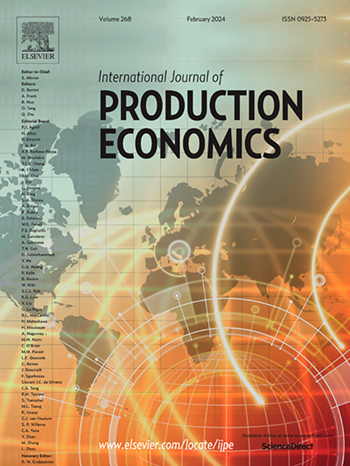数字孪生环境的混合数据驱动优化和决策方法:定制生产平台
IF 9.8
1区 工程技术
Q1 ENGINEERING, INDUSTRIAL
引用次数: 0
摘要
在工业 4.0 时代,先进技术正在改变制造流程和系统。此外,大数据和人工智能技术的日益普及也使得利用制造数据进行决策变得越来越重要。然而,由于资源的限制和制约,中小型企业(SMEs)在采用这些技术时遇到了巨大障碍。对于中小企业来说,由于制造系统的复杂性,选择合适的生产战略具有挑战性。为此,本文提出了一个混合模拟优化与多标准决策(SOMCDM)框架,以帮助中小企业确定有效的定制生产布局。在所提出的方法中,我们使用蜂窝制造系统对各种生产场景进行建模。使用多变量自适应回归样条曲线(MARS)创建不同生产布局的替代模型,并将其转化为基函数。随后,在遗传算法中将基函数作为拟合函数来确定最佳生产参数。然后,将优化参数应用于生产标准,并使用多标准决策技术进行排序。在一个案例研究中,所提出的框架被应用于为一家组装复杂产品的公司从三种方案中选择最佳生产平台。与现有生产平台相比,所选生产平台的整体生产绩效提高了 11.95%。这项研究证明了所提出的框架在使用数字孪生环境下的 SOMCDM 为生产高混合、小批量产品的劳动密集型中小企业确定最佳生产平台方面的有效性。通过对一家 3D 打印机装配厂的案例研究,进一步详细介绍了所提出的框架。本文章由计算机程序翻译,如有差异,请以英文原文为准。
A hybrid data-driven optimization and decision-making approach for a digital twin environment: Towards customizing production platforms
In the Industry 4.0 era, advanced technologies are transforming manufacturing processes and systems. Additionally, the increasing prevalence of big data and AI technologies have made decision-making using manufacturing data increasingly important. However, Small and Medium-sized Enterprises (SMEs) have encountered significant obstacles in adopting these technologies due to resource limitations and constraints. For SMEs, selecting an appropriate production strategy is challenging due to the complexity of manufacturing systems. As a response, this paper proposes a hybrid Simulation-Optimization with Multi-Criteria Decision-Making (SOMCDM) framework for SMEs to identify effective and customized production layouts. In the proposed approach, we model various production scenarios using a cellular manufacturing system. Surrogate models for different production layouts are created to basis functions using Multivariate Adaptive Regression Splines (MARS). Subsequently, the basis functions are used as fitness functions to identify optimal production parameters in a genetic algorithm. Then, optimized parameters are applied to production criteria and ranked using a multi-criteria decision-making technique. In a case study, the proposed framework is applied to select the best production platform among three scenarios for a company assembling complex products. The selected production platform improves overall manufacturing performance by 11.95% compared to the existing one. This study demonstrates the effectiveness of the proposed framework in identifying the best production platform for labor-intensive SMEs manufacturing high-mix, low-volume products using SOMCDM for a digital twin environment. The proposed framework is further detailed through a case study of a 3D printer assembly factory.
求助全文
通过发布文献求助,成功后即可免费获取论文全文。
去求助
来源期刊
CiteScore
21.40
自引率
7.50%
发文量
266
审稿时长
52 days
期刊介绍:
The International Journal of Production Economics focuses on the interface between engineering and management. It covers all aspects of manufacturing and process industries, as well as production in general. The journal is interdisciplinary, considering activities throughout the product life cycle and material flow cycle. It aims to disseminate knowledge for improving industrial practice and strengthening the theoretical base for decision making. The journal serves as a forum for exchanging ideas and presenting new developments in theory and application, combining academic standards with practical value for industrial applications.

 求助内容:
求助内容: 应助结果提醒方式:
应助结果提醒方式:


